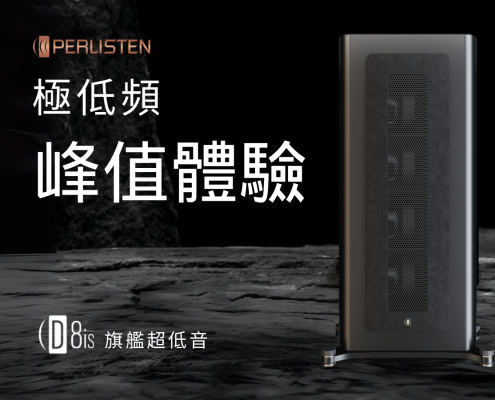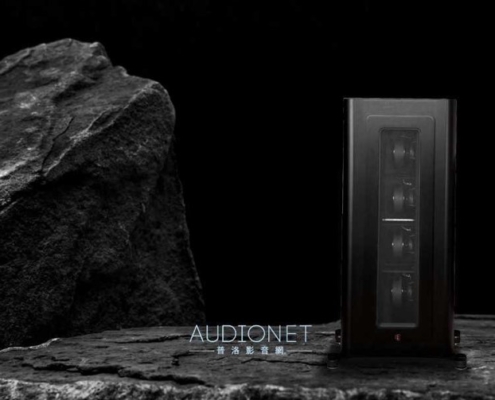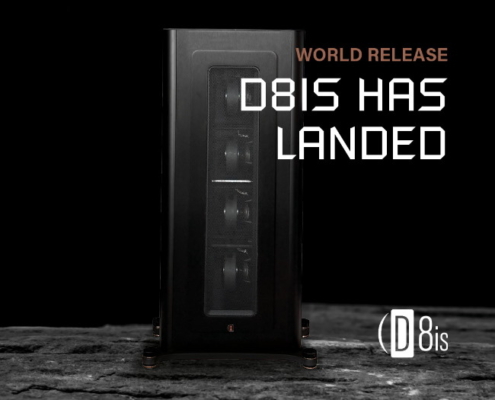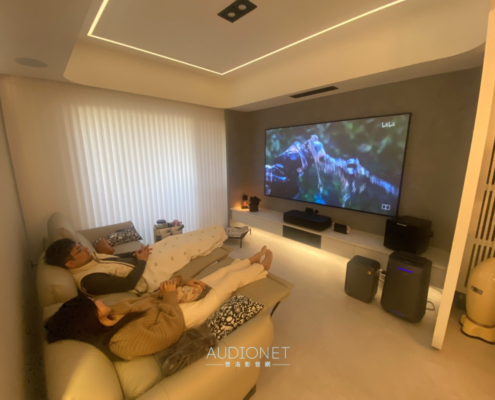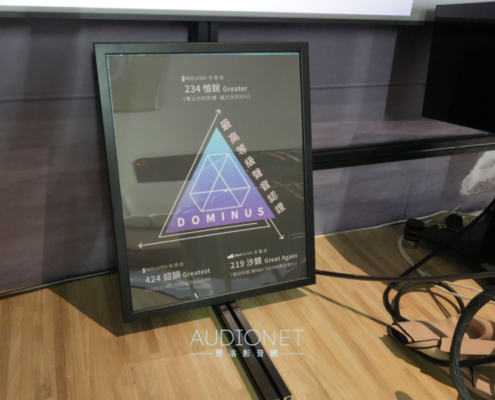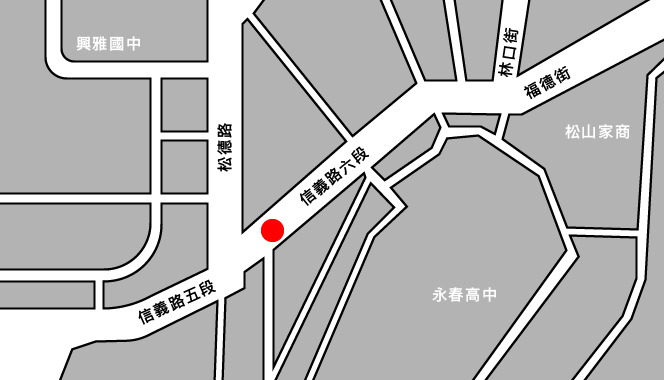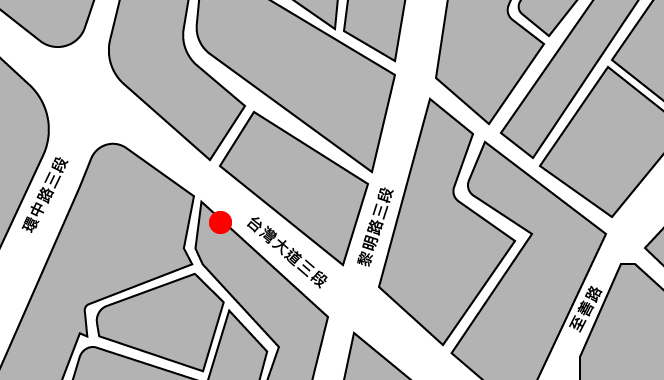[器評] 瑞典PRIMARE A35.8 美國Stereophile權威雜誌2024最佳推薦
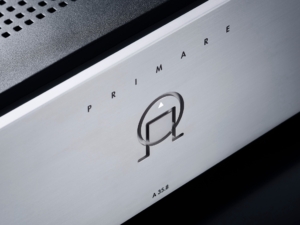 早在 1999 年,我在評測 Bow Technologies 的 Wazoo 整合式擴大機時,得知其設計師兼公司創辦人 Bo Christensen 之前曾創立另一家音響公司。我就是這樣發現 Primare 的。多年來,Primare 的各種產品都曾出現在音響展會上,但從未引起我的注意。不過,在最近的 EISA 媒體發表會中,Primare 展示了一款八聲道擴大機,這引起了我對多聲道音訊的興趣。我很高興能夠參加。
早在 1999 年,我在評測 Bow Technologies 的 Wazoo 整合式擴大機時,得知其設計師兼公司創辦人 Bo Christensen 之前曾創立另一家音響公司。我就是這樣發現 Primare 的。多年來,Primare 的各種產品都曾出現在音響展會上,但從未引起我的注意。不過,在最近的 EISA 媒體發表會中,Primare 展示了一款八聲道擴大機,這引起了我對多聲道音訊的興趣。我很高興能夠參加。
全新的 A35.8 功率放大器被寄予厚望。Herb Reichert 曾在 2022 年 4 月號的雜誌中對 A35.2 作了非常正面的評論,而 A35.2 也贏得了 A 級的地位。A35.8 在風格上與 A35.2 相似,但它提供的不僅僅是額外的通道: 它支援彈性通道橋接。這讓它可以驅動從高功率立體聲組合到各種多聲道配置的任何設備。(這兩台擴大機合起來,幾乎可以實現所有想像得到的揚聲器排列)。
了解更多:美國Stereophile權威雜誌2024最佳推薦
冷酷電源
A35.2 立體聲擴大機以 Primare 專有的 D 類擴大機模組 UFPD2 為基礎。要在 A35.8 的合理機箱內安裝八個這樣的模組,而不進行重大的重新設計,並使它們在熱限製範圍內持續運作是不切實際的。因此,Primare 選擇使用可靠且功能強大的 Hypex NC500 放大器模組,並做了一些修改。NC500 有一塊鋁板,用於與散熱片進行熱耦合,但為了最大化熱傳導和優化屏蔽,Primare 用自己設計的散熱片取代了這塊鋁板。四個這樣的散熱片,每個承載兩個模組,垂直安裝在主電路板的開孔中。當空氣流經上下穿孔的機箱時,散熱片會以對流方式冷卻。A35.8 由三個大型阻尼腳墊架高,有助於空氣流動。
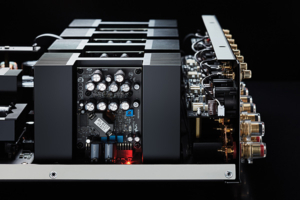
從 UFPD2 到改良版 Hypex 是否是一種退步?Primare 堅稱 「不可能根據單一零件或電路元件來衡量任何 Primare 型號的音質」,並指出該公司長期以來在各種模組基礎上優化 D 類功率放大器的經驗。「不應該推斷 A35.8 因為使用 Ncore 輸出模組而在任何方面受到影響或變差」。相反,基於 UFPD2 的 A35.2 和基於 Ncore 的 A35.8 的比較顯示,儘管新功放「聲音並沒有更好」,但「很接近」。
A35.8 由具有功率因素校正功能的雙輸出開關電源供應器驅動,據說其效率比被動、線性電源供應器高出約 5%。它的額定功率為 1500W,並具備軟箝位電路,每組輸出連接到一組四個 NC500 模組。因此,右邊的四個通道與左邊的通道是獨立供電的──這是橋接通道時必須注意的事項。
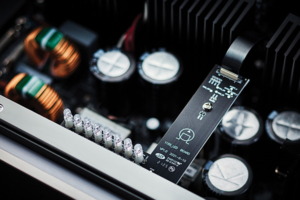
開箱與配置
A35.8 的包裝足以容納這種尺寸和重量的擴大機。擴大機隨附一本安全和警告手冊、一條交流電源線、一支交流極性筆(註腳 1)和一條 3.5 毫米觸發電纜。不包含使用者手冊或快速入門指南,但有註釋說明在 Primare 網站上哪裡可以找到使用者指南;也可以透過盒子上的二維碼來存取。該指南由幾個簡短的部分組成,以不同長度的網頁形式呈現。將這些頁面保存為PDF 並打印出來是乏味且浪費的——我最終打印了兩張插圖,並不斷返回我的電腦查找我需要的信息,儘管其他人可能會在智能手機或平板電腦上閱讀它。
A35.8 外觀時尚,但重量卻出奇地大。唯一的前面板功能是 Primare 的徽標和兼作電源按鈕的 LED 指示燈。後面板滿佈著連接器和開關。右側是一對 12V 觸發插孔、一個用於將 A35.8 連接到控制器系統的 RS232 連接埠、一個主電源開關和一個 IEC 電源插座(註腳 2)。面板的其餘部分承載八個擴大機模組的輸入、輸出和控制,分為四對。每個模組的頂部都有一個 RCA(非平衡)輸入和一個 XLR(平衡)輸入。每對 XLR 之間有兩個切換開關:一個用於在平衡和不平衡輸入之間進行選擇,另一個用於在雙通道操作、橋接操作和具有 6dB 增益的橋接操作之間進行選擇。
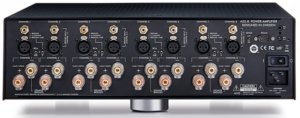
那是關於什麼的?通常,橋接兩個通道會產生 6dB 的輸出增益。正如我所做的那樣,將橋接和非橋接通道組合在一起(三個橋接對運行我的左中右揚聲器,其餘兩個通道運行我的兩個環繞聲道揚聲器)因此會導致輸出功率不平衡。當使用者選擇 A35.8 的第一個橋接模式時,會應用 6dB 的衰減來避免這種不平衡。但如果僅使用橋接輸出,用戶可以選擇6dB橋接模式以避免衰減。
中央聲道的普遍存在解釋了為什麼很少找到具有偶數聲道的多聲道放大器。 Primare 在 A35.8 中選擇八個通道非常有意義,因為它增加了橋接選項。
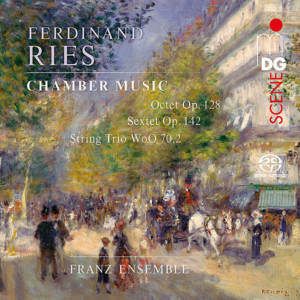
可以是八聲道後級
我使用平衡輸入將 A35.8 連接到我的多聲道系統,然後打開。當八個 Ncore 模組啟動時,擴大機內部的兩組紅色 LED 會短暫閃爍,繼電器會發出喀嚓聲。前面板的 LED 閃了幾下,然後穩定下來,表示擴大機已準備就緒。我首先播放了 Ferdinand Ries 的豎琴、鋼琴、單簧管、巴松管、圓號和低音大提琴六重奏,以及 Franz Ensemble (DSF rip from MDG Scene MDG 903 2136-6),這是我 2022 R2D4 選擇之一。這張五聲道錄音呈現了每種樂器同等的突出度和清晰度,總和成多變的音色花束。音場寬闊深邃,細節豐富。
從這些有點輕量級的素材轉到更有深度的東西,我接下來演奏了新的貝多芬: 第六交響曲;Steven Stucky:與 Manfred Honeck 及 Pittsburgh Symphony 合作的《寂靜的春天》(DSF 翻錄自 Reference Recording FR-747)。Honeck 一如既往地以速度和力量驅動他的樂團,A35.8 也相應地驅動了音樂,並帶來了非凡的細節–在多聲道下尤其明顯。

當以立體聲播放時,在各方面都顯得較為蒼白,而且我錯過了較低弦線的微妙重量感。我試著調高音量,以彌補只有兩個喇叭而非五個喇叭的缺憾,但這只是部分的療效。A35.8 的兩個聲道在 8 ohms 時的額定功率分別為 150Wpc 和 4 ohms 時的額定功率為 300Wpc,但對於我的 Revel Ultima Studio2 立體聲音箱來說,功率似乎並不足夠;它們需要更大的功率才能開啟。
可以是五聲道後級
這就是 A35.8 的額外頻道和橋接選項發揮作用的地方。Primare 表示橋接頻道輸出的額定功率為 8 歐姆 740 瓦和 4 歐姆 750 瓦。我將等待 JA 的測量結果,但這似乎與 Studio2s 更為匹配,Studio2s 的阻抗在 1kHz 以下大多維持在 4 到 6 ohms 之間。我將擴大機設定為三個橋接聲道對來運行 Studio2s 的 L/C/R,並將其餘兩個獨立聲道留給兩個 F206s 環繞喇叭。這個配置證明了 Primare 的智慧,它選擇提供八個聲道而非一般的七個聲道,並提供將橋接輸出衰減至未橋接輸出的輸出電平的選項。

橋接讓 A35.8 變成一台更令人興奮的擴大機。不僅在 Honeck 的貝多芬第六交響曲(立體聲)中恢復了低音平衡,我試聽的其他作品也都令人印象深刻。我迷上了 Josh Tatsuo Cullen 錄製的 Florence Price 鋼琴作品 Scenes in a Tin Can Alley(24/96 下載,Blue Griffin BGR615)。使用 A35.8 橋接播放時,從珍珠般的高音到木質、緊湊、乾淨的低音,鋼琴的音色都很平衡。結像如此令人信服,以至於我不得不走上前去,確認有源立體聲對之間的中置揚聲器並沒有發出任何聲音。

接下來,我試聽了一張很棒的新錄音,收錄了 Schoenberg、Messiaen 和 Ravel 的鋼琴與樂團作品,由鋼琴家 Francesco Piemontesi 與 Orchestre de la Suisse Romande 在 Jonathan Nott 的指揮下演奏 (Pentatone PTC5186949)。我以立體聲及多聲道、DSD64 及 24/192 PCM 等不同組合播放,所有的聲音都非常壯觀。在播放閃閃生輝、經常帶有藍調風格的 Ravel 時,管樂、銅管樂和敲擊樂似乎排列在弦樂的周圍和背後,在一個可信的聲學空間中。所有的聲音都非常清晰細膩。所有動態層次的平衡都令人滿意,但在第一樂章中段的靜音部分尤其令人愉悅。在此,豎琴和較低的弦樂以沙啞的音調演奏,但仍然飽滿。當這個段落結束時,其他樂器以雷霆萬鈞之勢回歸,低音鼓在右側。空間感非常強烈。多聲道音場比立體聲呈現的更寬更深,但卻沒有揭示出任何新的東西。
即使在立體聲中,橋接聲道也能讓 A35.8 變成一頭猛獸,讓我不敢將音量調高。當我開大音量時,音樂變得更宏大、更身歷其境。
可以是兩聲道後級
Primare 還有一招。將 A35.8 設定為四個橋接聲道對,並對立體聲揚聲器進行雙功放,每個揚聲器可獲得兩個 740Wpc 引擎,如何?我並不提倡使用固定、被動分頻器(註腳 3)對揚聲器進行雙功放,但我還是試了一下。我插入了一個 XLR 分線器,將左聲道訊號線導入 A35.8 的兩個額定 750W 橋接擴大機,右聲道也是如此。我拆除了 Studio2 揚聲器的左右輸入短路連結,並將兩條 Canare 4S11 揚聲器連接線從 Primare 連接到每個揚聲器的上下端子。

帶著一點惶恐,我啟動 A35.8,開始播放 Robert Plant 和 Alison Kraus 的 Raise the Roof (Rounder/Concord 1166101371) 的第 10 首曲目「High and Lonesome」。在任何音量達到我的忍耐極限時,低音都強而有力,伴奏樂器清晰,人聲渾厚(如果人類可以唱得那麼大)。我也被其他的「大音量」所震撼:例如由 Leonard Bernstein 指揮 Vienna Philharmonic Orchestra(CD,DG 427 697-2)演奏的 Mahler 第六交響曲最後一個樂章,以及 Hugh Masekela 的 Hope(SACD,Analogue Productions CAPJ 82020)中的「Stimela」,我都是以不相鄰的音量播放。但在長時間聆聽時,我無法忍受比標準橋接配置(非雙功放)更高的音量。也許在一個大得多的房間中使用更大、敏感度更低的揚聲器,就能利用這種額外的力量。
兩相比較
總體而言,無論在任何配置下,都沒有出現我在早期 Ncore 型擴大機上遇到的「灰暗」高音,即使是 A35.8 的基本、無橋樑配置也是如此。在我偏好的五聲道配置中,A35.8 的高音效果與其他優質擴大機不相上下。
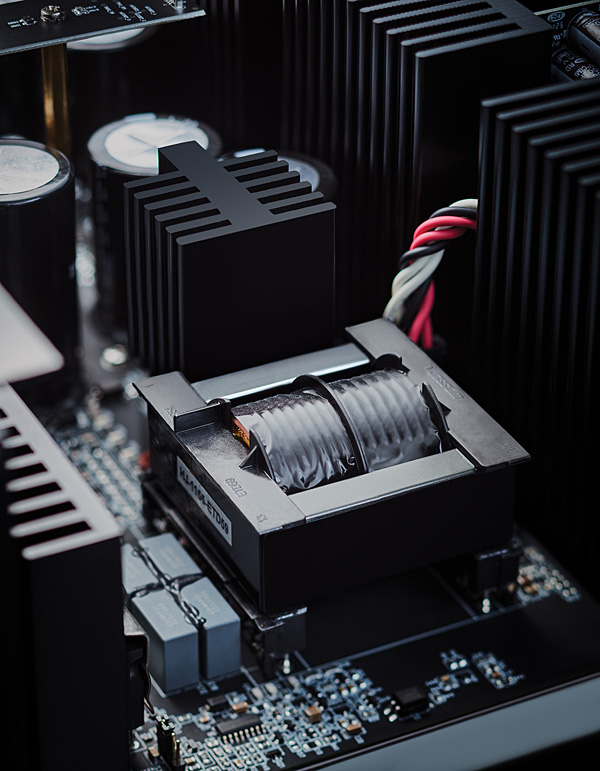
從紙上看來,A35.8 與我在康涅狄格系統中使用的七聲道擴大機 NAD M28 ($4999) 最為相似。我還有一對 NAD C 298 立體聲擴大機。這兩台 NAD 功放都是以 Purifi 功放為基礎,我聽起來完全一樣。它們與 Primare 沒有明顯的差異。如果有的話,Primare 似乎比 NAD 稍微前進一些,經常傳達出一種吸引人的活躍感。相反地,我經常覺得 NADs 呈現了更自然的音場,我覺得這點很重要。A35.8 比 NAD M28 多了一個聲道,價格也便宜了 10%,但功能卻更豐富。
將 A35.8 與我的 Benchmark AHB2(一個誠實、準確的擴音器)比較,發現了更多的對比。我幾乎總是偏好 Benchmark,因為它中性的音色平衡和不失真音場,但在某些情況下,在某些錄音中,包括 Hugh Masekela 的現場 「Stimela」,Primare 比 Benchmark 更令人信服。
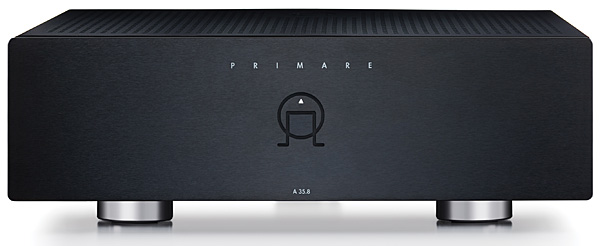
結論
Primare A35.8 功放讓我感到驚訝。它在我的系統中的表現證實了 Primare 的聲稱,他們可以利用 Ncore 模組製造出很棒的擴大機,可以媲美使用較新 Purifi 技術的擴大機,以及使用傳統非開關技術的擴大機。它的八通道和橋接式增益選項賦予了它極大的多功能性。對我來說,Primare A35.8 值得在任何多聲道設定中試聽。使用和聆聽它都是一種享受。
註 1:使用對稱雙腳插頭(或 「騙子插頭」)時,交流電極性可能會顛倒,並會增加雜訊。此裝置用於測試極性是否正確。
註 2:Primare 建議:「由於電流較高,A35.8 在背板上採用 C20 IEC 插座,而非一般的 C13/14 IEC 插座,因此替換的電源線應以 C19 IEC 插頭為端接」。
註 3: 使用立體聲擴大機的被動雙功放(即使用揚聲器的內置分頻網路)有兩大理論優點: 第一,揚聲器由兩個聲道驅動時比由一個聲道驅動時可獲得更大的功率。(理論上,最大增幅僅為 3dB,但實際上由於音樂的功率頻譜關係,所能達到的增幅小於 3dB)。第二個優點是,隔離兩個聲道和纜線可防止低頻部分產生的失真和非線性影響高頻部分。這一點已經用儀器證明,但可聽性尚未證實。
閱讀原文:stereophile評測原文
了解更多:A35.8產品頁面
技術服務諮詢
M&K Sound台灣總代理 愷銳音響 台北總公司
地址:台北市信義區信義路六段22號2樓 | 電話:02-2726-1286
台中展示中心
地址:台中市西屯區台灣大道三段709號 | 電話:04-2258-1918


